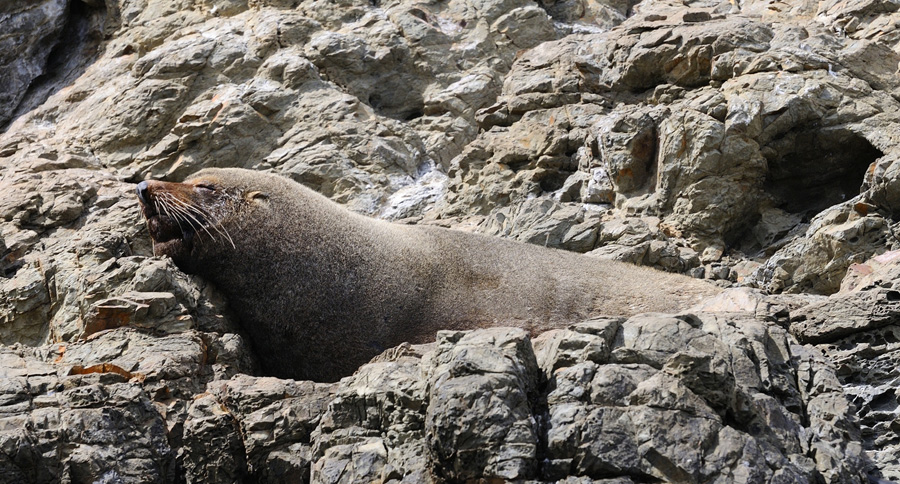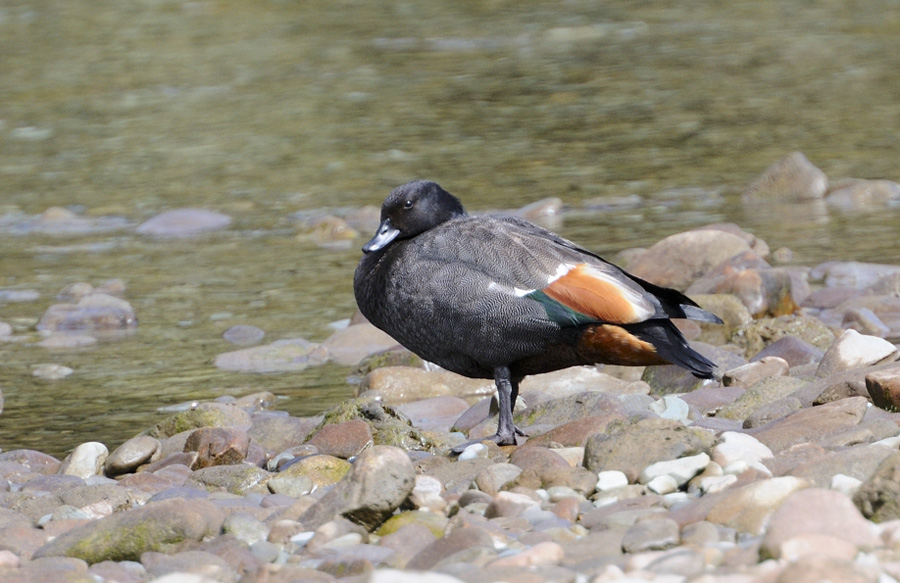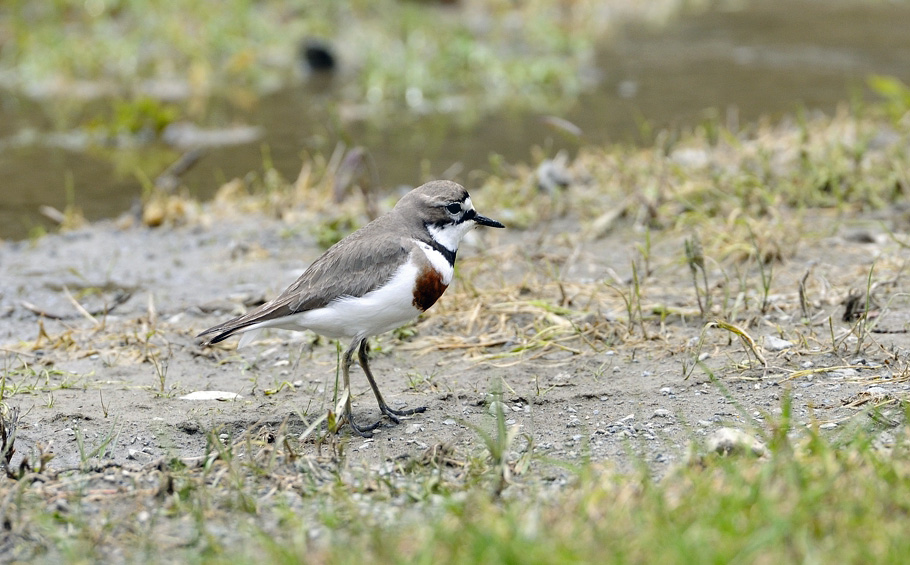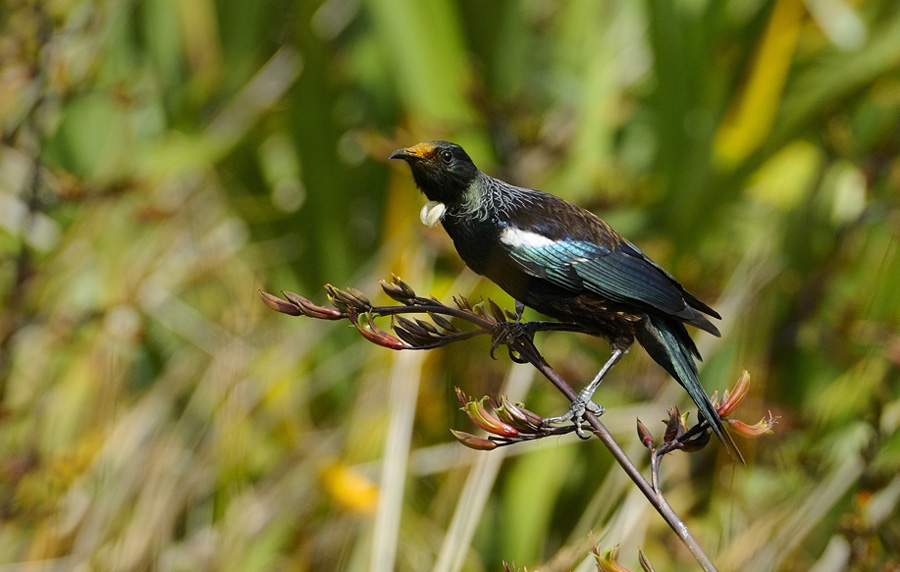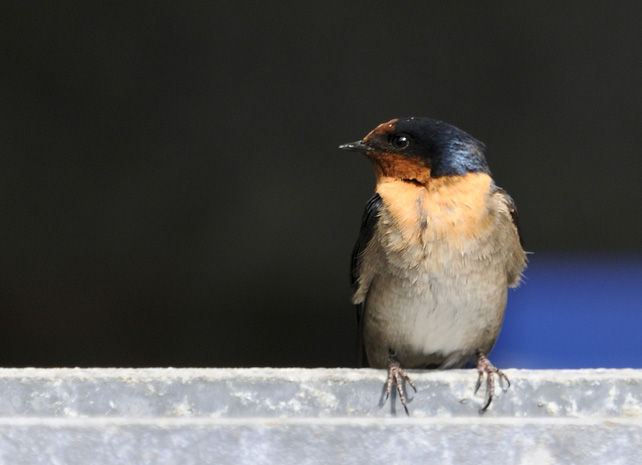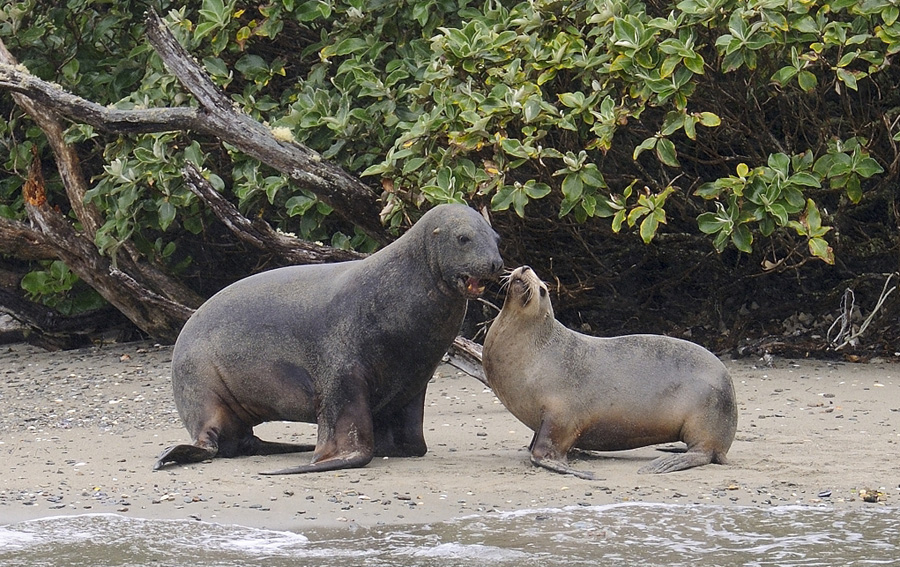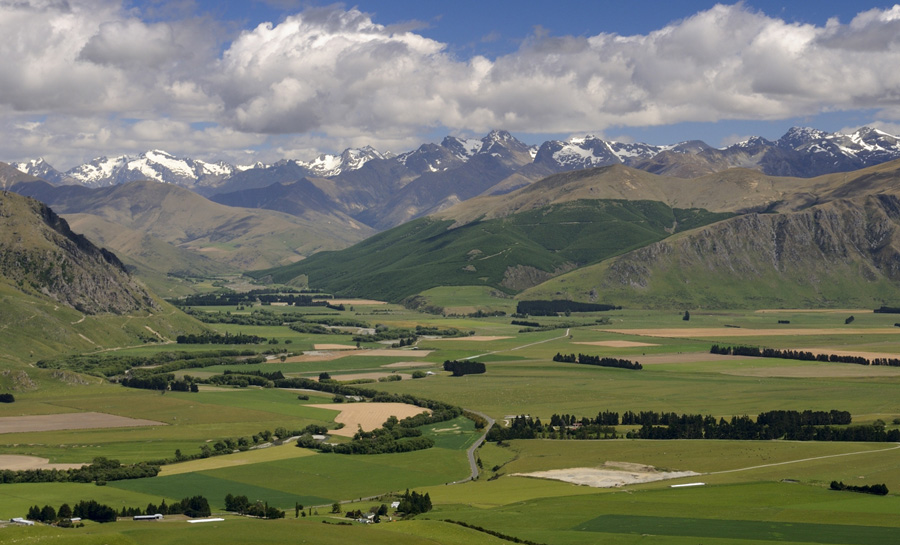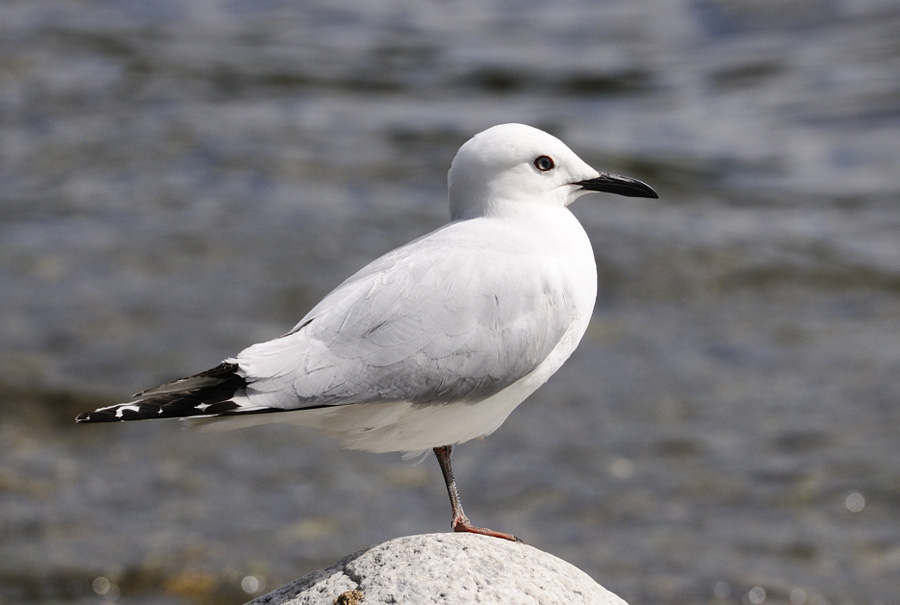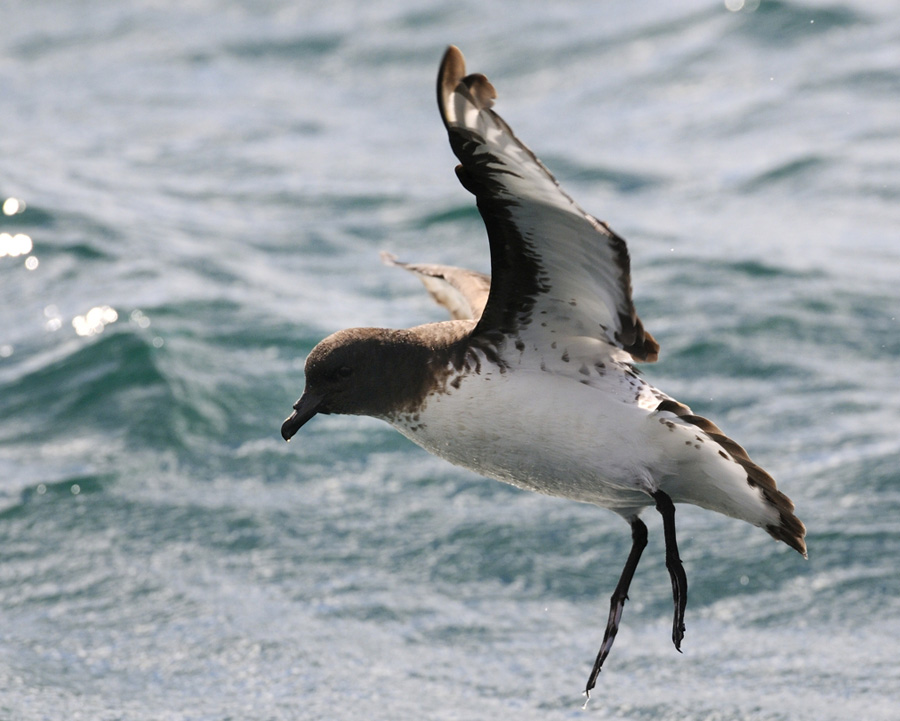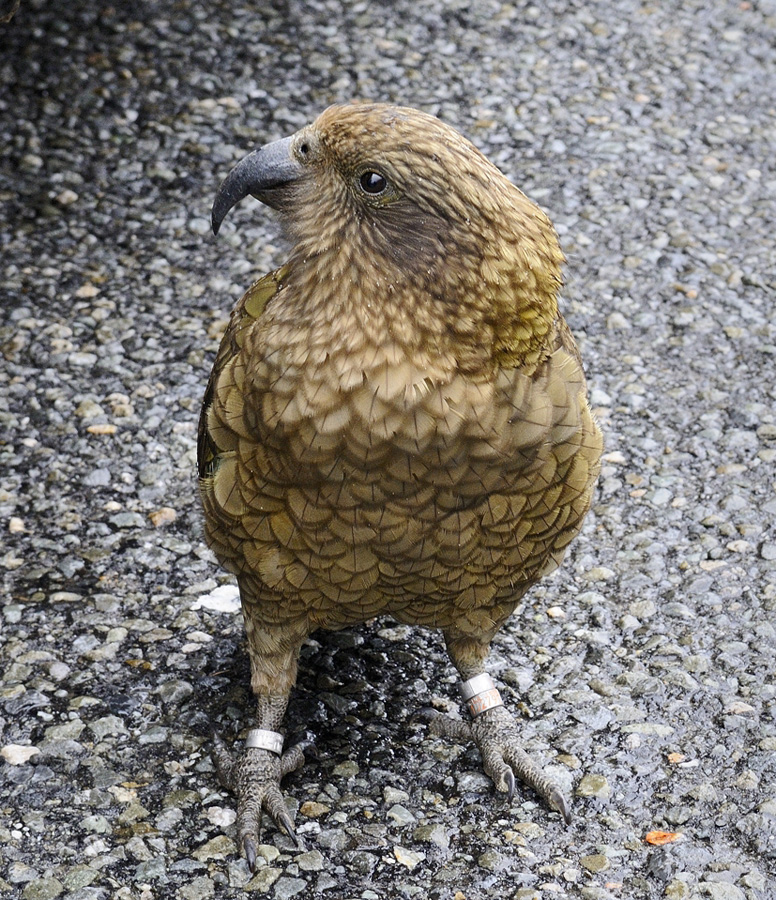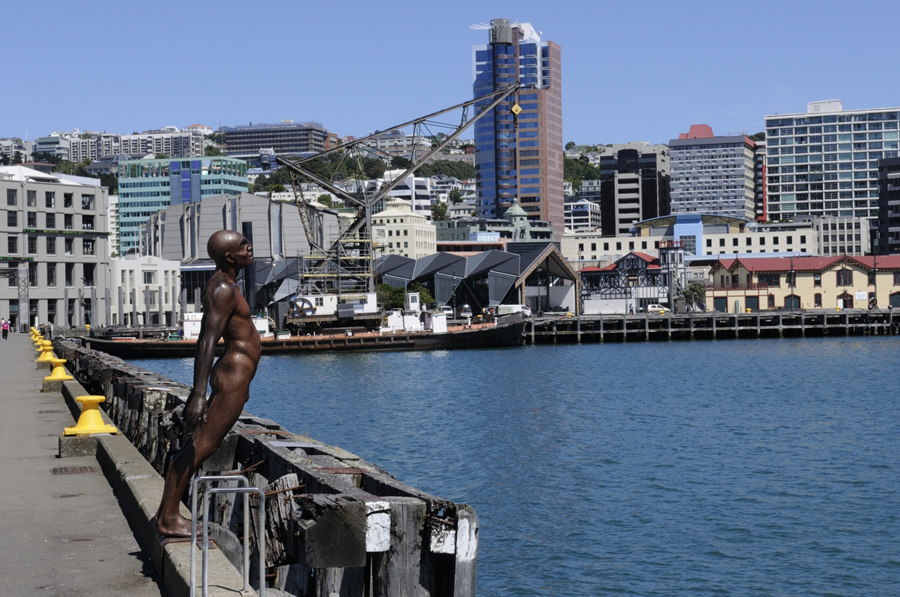New Zealand is a wonderful scenic country, easy to travel around and very friendly people. But, it is larger than you think so you need a lot of time to see it all, hence I concentrated on South Island. I travelled out in late November returning mid-December which is breeding season for the birds and before the peak holiday season when the main tourist areas become very busy. Even so, it is wise to plan and book a year in advance.
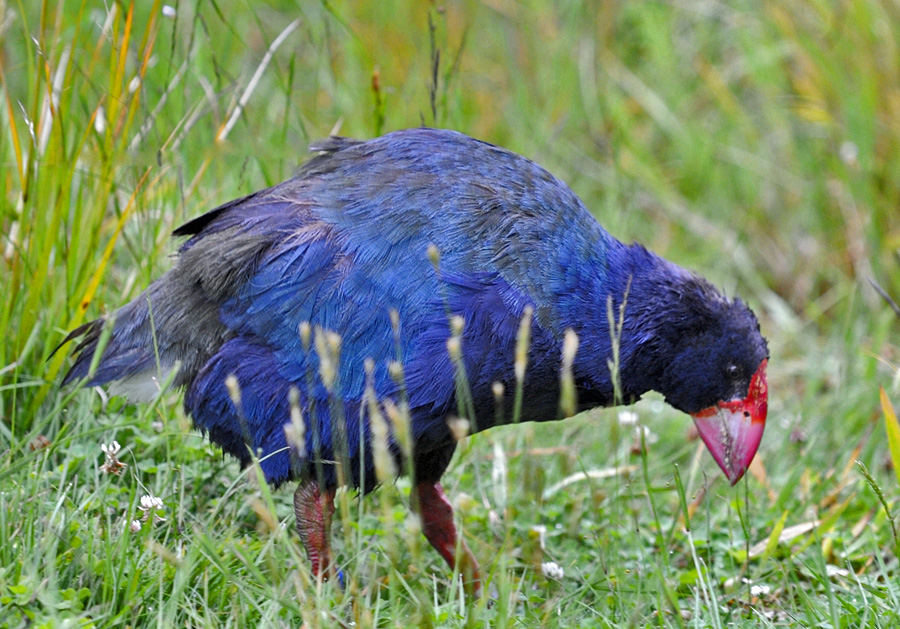 Takeha
Takeha
Paradise shelduck
Banded dotterel
Tui
Welcome swallow
Kaikoura, South Island
Hooker’s sea lion
Garston, south of Lake Wakatipu, South Island
Black-billed gull
NZ cape petrel
Kea, scrounging food in a car park
Wellington, North Island
Capital cities rarely feature on wildlife tours but a few days spent around the Wellington area on North Island was worthwhile. The city faces a huge natural harbour so shoreline and sea birds are easy to find. Around town one soon notices the species that the British introduced to the country such as House Sparrow, Blackbird and Starling. The national museum, Te Papa, is worth a visit. Stuffed specimens in the wildlife gallery may not be to everyone’s taste but it is a good introduction to the native species and their habitats. Zealandia is a 250Ha wooded nature reserve in the city set around two lakes that once supplied water to the city. Apart from the wild birds it has a breeding programme for the endangered Takahe, a ‘Moorhen on steroids’ with a deep blue colour, so this is one of the easiest places to see one.
I flew to Christchurch and headed north to Kaikoura on the east coast which is a wildlife hotspot. En route a stop-off at a quiet nature reserve produced Cape Barren Goose, Australasian Shoveler, Black Swan and New Zealand Scaup which was the most common duck seen throughout the trip. Kaikoura is best known for whale watching as Sperm whales can be seen close offshore. The albatross encounter cruise is altogether better with four species of albatross plus petrels, shearwaters, terns and gulls; but you do need good sea-legs! New Zealand Fur Seals were seen on an island on the way back with White-fronted Terns nesting higher up the rocks.
The Wilderness Lodge at Arthur’s Pass, apart from being a great hotel, sits in a conservation area of ancient Nothofagus (Southern Beech) woodland run by the hotel. A stay here supports conservation. The woodlands are good for native species such as Rifleman, Brown Tree Creeper, Fantail, Saddleback and Bellbird. Nearby one can find the mountain parrot, the Kea, which is infamous for attacking tourist vehicles.
The sister hotel at Lake Moeraki on the west coast is also in a conservation area and Paradise Shelduck nest in the grounds. The climate here is much warmer and wetter than the eastern side of the country so the vegetation is Kahikatea forest with an understory of ferns and lichens. It is sometimes also called Podocarp forest after the genus of evergreen trees found here. It has the feel of a jungle. It was good to see New Zealand Tree Ferns in their natural habitat. Monro beach is where the rare Fjordland Penguin breeds but you have to get here in November to see them as they are pelagic once the chicks have fledged. The site has been much disturbed by tourists so the future of the colony is in doubt.
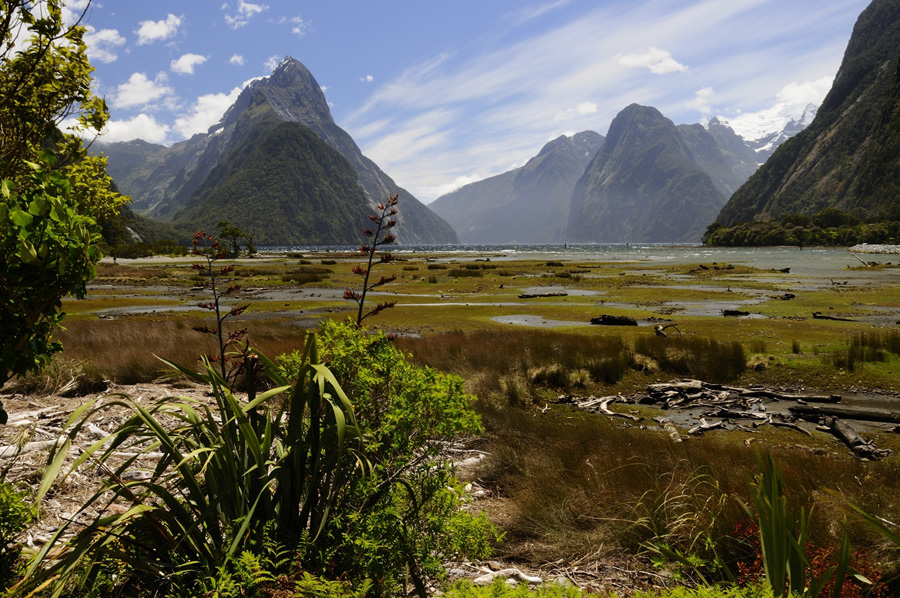
Mitre Peak, Milford Sound, just beautiful
Heading south through Fjordland the landscape is a mixture of swamp, forest, agriculture and mountain with opportunities to see Weka, Grey Duck, Marsh and Swamp Harriers, Pied Stilt and Purple Swamphen for example. At Wanaka it was a surprise to see Common Redpoll amongst the vineyards along the lake shore – I am more used to seeing them in the snow in Norway in winter. A day trip to the tourist hotspot of Milford Sound, which is spectacular, produced relatively few birds. En route I did see a Black-fronted Tern some 20km or so inland. There was a fruitless hunt for Blue-billed Duck which is as elusive as its South American counterpart the Torrent Duck. Both live on fast-flowing mountain rivers. The next stop was a success finding the rare Rock Wren whose numbers are now increasing as a result of intensive conservation work.
Stewart Island off the south coast offers some protection to native species. Brown Kiwi, the national bird of NZ, is nocturnal and a trip to see them was a treat. The rules on no torches and no flashguns made photography a no-no. Ulva island in Pattison Inlet is a predator-free nature reserve which makes it a good place to look for Wrybill, Yellowhead and Stewart Island Robin along with other species already seen. Learning the songs of the woodland birds as one goes along is a great help in these circumstances, as well as a knowledgeable guide! On the return journey to Oban we saw a mother and pup Hooker’s Sea-lion on the shore and Little (Blue) Penguins on the sea. It is the smallest penguin species in the world. In the evenings flocks of the lowland relative of the Kea, the Kakapo, flew around town making a lot of noise and they are just as brazen as their mountain relatives.
Back on the mainland it was a long drive through The Catlins to the final wildlife hotspot, Otago Peninsula. Royal Albatross breed here at the end by the lighthouse with Royal Spoonbills nesting nearby. Although it is 300km from Stewart island there were Stewart Island Shags nesting on the cliffs. After a final night in Dunedin it was time to fly home.
Throughout the trip the conservation issues facing New Zealand were all too apparent. No wonder their bio-security measures on entry to the country are so strict – make sure you fully comply. The ecology of the conservation areas we visited was striking in comparison with other areas. The British introduced the first mammalian predators, rats, stoats and weasels, which have drastically reduced the numbers of the native species of animal and bird that have no natural defence. More recently Opossums have arrived from Australia. On my travels, rat traps and poison bait feeders were a common sight as they try to control the predator numbers. The British also introduced plants and birds and like all invaders they are more vigorous than the native species harming the ecology of the islands. Red Deer were brought into the country and now they are farmed for venison but significant numbers remain in the wild damaging the forests. There is no closed season on deer hunting. In a misguided experiment, Lodge Pole Pine trees were introduced from North America. They have no commercial value and they have spread but it is uneconomic to log them, even for firewood. A more recent threat comes from within the country. Farmers are changing from lamb production for meat to dairy farming. The export of milk products to China is booming which is driving the change. Dairy cattle need much richer pastures and larger quantities of feed than sheep so large quantities of fertiliser are used along with irrigation. The effects of water abstraction and fertiliser run-off pose a threat to the rivers and estuarial areas. The Department of Conservation is doing its best but suffers from a lack of funding which is an all too familiar story. The invaders are here to stay.
It is a great country to visit to enjoy the wildlife in all its forms.
Richard Belson.
